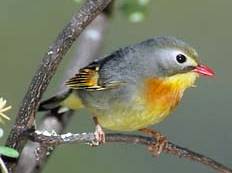|
The Society:
 HOME
HOME
 Introduction
Introduction
 Objects
Objects
 Join or renew
Join or renew
 Guest Book
Guest Book
 Hall of Fame Hall of Fame
 Products For Sale
Products For Sale
 Classifieds Ads
Classifieds Ads
 Contact Us
Contact Us
The Avicultural Journal
 Journal Archives
Journal Archives
 Exotic Bird Species
Exotic Bird Species
 Budgerigar Information
Budgerigar Information
 Canary Information
Canary Information
 Parrot Information
Parrot Information
 Finch Information
Finch Information
 General Information
General Information
 First Breeding Awards
First Breeding Awards
Affiliations:
 Affiliated Clubs
Affiliated Clubs
 Parrot Association of Canada
Parrot Association of Canada
 Avian Preservation Foundatn
Avian Preservation Foundatn
Showing Birds:
 Canadian Shows
Canadian Shows
 National Results
National Results
 Accredited Judges
Accredited Judges
Leg Bands:
 General Information
General Information
 Band Size Chart
Band Size Chart
 Trace a Band
Trace a Band
 Band Prices
Band Prices
 Order Bands
Order Bands
 Current Ring Codes
Current Ring Codes
Links:
 Links
Links
 Copyright & Privacy Policies
Copyright & Privacy Policies
|
PEKIN ROBINS
 by Peter Karsten
by Peter Karsten
http://www.pekinrobin.ca/
The following notes have been prepared to assist participants in the Pekin Robin breeding consortium. Additional information is available in various publications located in the links and references section.
Biological Considerations
The Pekin Robin (Leiothrix lutea) also called Red-billed Leiothrix, Chinese or Japanese Nightingale or hill tit belongs to the Order of Passeriformes (perching birds) family of Sylviidae, tribe Timaliini “the babblers”. The Pekin Robin is a typical soft-bill bird in the context of aviculture and requires corresponding diets and care differing from seed eaters, such as finches, sparrows, quails, doves and psittacines.
Pekin Robins have been popular cage birds for over 100 years. They are very colorful, fine singers, active and hardy, long lived birds which do well in captivity. Their cheerful behavior and intelligence make them delightful birds to own. The species is long lived with records beyond 20 years in captivity.
Birds, mammals, and reptiles are at times grouped according to their predominant food intake, for example: carnivores (meat eaters), herbivores (plant eaters), insectivores (feeding on insects, spiders and other arthropods), frugivores (fruit eaters), nectarivores (feeding on nectar) and omnivores (feeding on a mixture of several food groups). Pekin Robins lean towards the insectivore and frugivore group, but consume constituents of other food groups as well.
This becomes an important point of consideration to accommodate the dietary and behavioral needs of the birds and the daily care routine. Pekin Robins must have a varied diet with live insect supplements, particularly for the breeding of this species. Pekin Robins can be observed picking up "finch" seeds, however these are not suitable as a source of essential nutrients.
Pekin Robins can not shell seeds and do not have a crop like seed-eaters to aid pre-digestion, or a very muscular stomach, containing grit, to break down the seeds to digest them effectively. A Pekin Robin may pick up some seeds, but passes them through for the most part and would in time starve to death, unable to obtain enough nutrition. Sprouted seeds are, on the other hand, a more suitable food source.
Another consideration is the species' natural way of food gathering as an insectivore and to an extent as a frugivore. It requires constant search for insects and ripe fruit within a habitat of great diversity in plant and animal species and habitat form. Pekin Robins live in the underbrush of mountain forests with small clearings and creeks. They will also visit cultivated lands such as gardens and fruit plantations to search for food. Their natural behavior results in relatively long periods of food gathering interrupted with short rest periods.
To accommodate this and to enjoy observing their fascinating behavior we must provide them with larger enclosures with a simulated bush habitat. Pekin Robins and most other soft-bill birds usually make a pitiful display in barren, small conventional cages. They are prone to acquire stereotypical behaviour by going a short, constantly repeated routine of movements. In addition, they often damage their otherwise splendid plumage, which they keep in immaculate condition in a suitable environment.
Pekin Robins live on the southern slopes of the western Himalayan mountains in Kashmir to the east of China, south to Myanmar. They can be found in mountain forests to an elevation of 2700 m, which makes this species relatively hardy for an "exotic" cage bird. Pekin Robins can tolerate subfreezing temperatures, provided they have been conditioned to the proper sequence of seasonal changes and that they have a large, partially covered and wind protected enclosure. They must always have access to unfrozen food and water. Birds could perish if they do not have water and food available to them for 24 hours.
Ideally the outside aviary is connected to an indoor shelter with temperatures above freezing. The food is offered in this space to habituate the birds to come inside so that they can be locked in if particularly windy, wet and cold weather is predicted. Cold weather causes additional stress to a bird in marginal condition, during molt, following a demanding breeding season, and, of course while fighting any form of illness. There is no incentive to establish durability records. The author routinely brings the birds into protected shelter if outside temperatures drop below –5C. Nonetheless, the climatic tolerance allows us to create a well planted, unheated outdoor habitat for the birds, less expensive to construct and maintain than environments for other exotic bird species.
The creation of a close to nature aviary habitat can be looked at as an art form in itself, one that is aesthetically rewarding, educational, entertaining to the observer, and highly beneficial to the well-being of the birds. A natural well planted environment of sufficient size makes regular cleaning and maintenance a small task since the proportioned amount of space per bird is relatively great. This is important as it eliminates disturbances during the nesting period.
|